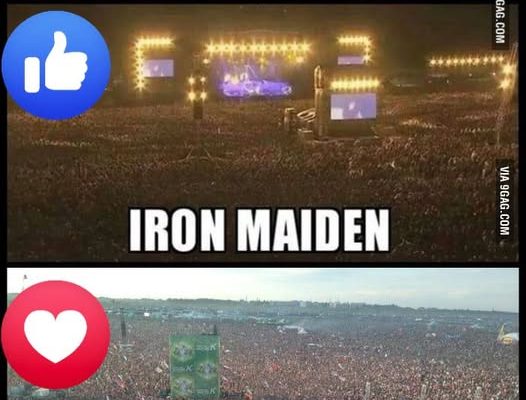Rammstein is more than a band; it is a phenomenon that transcends conventional musical boundaries, turning concerts into immersive, multi-sensory experiences. Hailing from Germany, Rammstein has forged a reputation as a titan of industrial metal, a genre defined by its mechanized sound, darkly theatrical elements, and confrontational aesthetic. Yet, what sets Rammstein apart is not merely their music—it is the meticulous, almost ritualistic way they have mastered the craft of total performance. To understand Rammstein’s cultural impact, one must look beyond the layers of guitar riffs, pounding drums, and Till Lindemann’s iconic baritone vocals, and delve into the calculated artistry behind every aspect of their stagecraft. Each live show becomes a testament to the band’s ability to manipulate sight, sound, and sensation to produce an experience that lingers in the memory long after the last note fades.
From the very first moment of a Rammstein concert, the audience is transported into an alternate reality. The band’s mastery lies in their ability to construct a world where music and theater merge seamlessly. The stage is never just a platform for playing songs; it is a living, breathing environment where pyrotechnics, lighting, costume design, and choreography converge to evoke emotion. Every detail is deliberate, designed to heighten tension, surprise, or awe. Rammstein understands that music is not merely an auditory experience; it is a full-bodied encounter that engages multiple senses. Fans do not simply attend a Rammstein concert—they are inducted into a narrative that is equal parts spectacle, performance art, and sonic assault. The auditory element, though paramount, is only one layer of a meticulously crafted sensory architecture.
Central to the band’s approach is the use of pyrotechnics. Fire is not merely an accessory for Rammstein; it is a defining element of their identity. Their pyrotechnic displays are legendary, ranging from towering flames that erupt from the stage to intricate sequences that coincide perfectly with musical climaxes. Each burst of fire is synchronized with the rhythm of the music, creating a visual punctuation that amplifies the impact of every beat. Pyrotechnics serve multiple functions—they are a tool for drama, a method of storytelling, and a means of engaging the audience viscerally. In a Rammstein concert, fire does more than illuminate the stage; it becomes an extension of the music itself, a tangible representation of intensity and emotion. This integration of pyrotechnics into the musical fabric reflects a deeper understanding of how humans respond to spectacle, demonstrating the band’s mastery over the interplay between sound and sight.
The theatricality of Rammstein extends beyond pyrotechnics into the domain of costume and character. Each member of the band assumes a persona that complements the dark, industrial aesthetic of their music. Till Lindemann, the lead vocalist, often embodies a figure of commanding presence and enigmatic menace, his towering frame accentuated by costumes that suggest both militaristic precision and gothic grandeur. Guitarists Richard Z. Kruspe and Paul Landers, alongside bassist Oliver Riedel and drummer Christoph Schneider, adopt visual motifs that reinforce the sense of cohesion and thematic consistency. These costumes are not mere fashion choices; they are integral to the storytelling that unfolds on stage, helping to create an atmosphere in which the audience is both observer and participant. Rammstein’s ability to fuse music with performative identity underscores their understanding that total performance is as much about visual narrative as it is about sound.
Lighting design is another crucial component of Rammstein’s live artistry. The band employs a sophisticated palette of illumination techniques to manipulate mood and focus attention. Sudden blackouts, piercing spotlights, and shifting color schemes punctuate songs with emotional precision, guiding the audience’s gaze and enhancing the dramatic arc of the performance. Lighting functions as an unspoken language, communicating tension, aggression, or intimacy without a single word. In this way, Rammstein’s concerts resemble theatrical productions as much as musical events, with each change in light signaling a shift in narrative or emotional intensity. The seamless integration of visual cues with musical performance requires meticulous planning, rehearsal, and technical expertise, demonstrating that Rammstein approaches live shows with the precision of stage directors as much as musicians.
Choreography plays a subtle yet vital role in Rammstein’s total performance. Movements are calculated to maximize impact and reinforce the theatrical experience. Members of the band do not merely play instruments; they interact with one another and with the stage environment in ways that create tension, drama, and spectacle. Whether it is Lindemann’s deliberate pacing, synchronized gestures during musical climaxes, or the carefully timed interactions with pyrotechnic devices, each action is part of a larger narrative designed to engage the audience physically and emotionally. Even small details, such as a guitarist tilting their instrument toward a flame or the bassist stepping into a shaft of light, contribute to a cohesive visual language that enhances the overall performance. Rammstein’s choreography demonstrates that music is most compelling when integrated with physical presence, movement, and intentionality.
Audience interaction is yet another layer of Rammstein’s mastery of total performance. Unlike traditional concerts, where spectators are passive recipients, Rammstein’s shows actively involve the crowd in the unfolding spectacle. Pyrotechnic eruptions, smoke effects, and musical cues are engineered to provoke visceral responses—cheers, gasps, and even fear—that forge a collective sense of immersion. The band cultivates an atmosphere in which the audience becomes part of the performance, a living component of the spectacle. This participatory dimension enhances the intensity of the experience, creating a shared emotional journey that binds fans to the band and to each other. Rammstein’s understanding of crowd psychology illustrates their commitment to crafting not just concerts, but transformative events that resonate on both individual and communal levels.
Rammstein’s approach to album production mirrors the philosophy that drives their live shows. Each record is meticulously constructed to function as both a sonic and conceptual experience. The band considers texture, dynamics, and thematic coherence with the same rigor applied to their stagecraft. Songs are layered with industrial textures, driving rhythms, and provocative lyrics, creating soundscapes that are simultaneously aggressive and meticulously detailed. The musical structure is designed to complement the visual and performative elements of live shows, allowing the recorded material to serve as a blueprint for the sensory experiences of concerts. This synergy between studio work and live performance exemplifies Rammstein’s holistic approach to artistry, emphasizing that true mastery involves a synthesis of all creative elements rather than isolated excellence in any single domain.
Language and lyrical content are also integral to Rammstein’s total performance ethos. Singing predominantly in German, the band infuses their work with linguistic precision, dark humor, and narrative complexity. The lyrics often explore themes of power, desire, societal tension, and human psychology, providing layers of meaning that enhance the theatrical and sensory dimensions of the music. Even for audiences who do not speak German, the emotional weight of Lindemann’s delivery, combined with the intensity of the music and performance, conveys meaning and engages the imagination. Language, in this context, is not merely a vehicle for communication; it is a component of the broader artistic architecture that defines Rammstein’s total performance.
Critically, Rammstein has maintained a remarkable consistency in their approach while continuing to innovate. Their concerts evolve with each tour, incorporating new technology, pyrotechnic devices, and theatrical concepts, yet the core principles of immersive, total performance remain unchanged. This ability to balance tradition and innovation is a hallmark of their artistry. They understand that mastery is not static; it requires continuous refinement, experimentation, and responsiveness to both audience expectations and the evolving landscape of live entertainment. By embracing technological advances while adhering to their performative philosophy, Rammstein ensures that each show is both fresh and unmistakably authentic.
Rammstein’s influence extends beyond their immediate fanbase and into the broader culture of performance art, live entertainment, and industrial music. They have redefined what a concert can be, setting new benchmarks for spectacle, precision, and audience engagement. Artists across genres look to Rammstein as a model for how to integrate multiple artistic disciplines into a cohesive, compelling performance. In an era where live shows increasingly rely on technology and sensory stimulation, Rammstein demonstrates that the most impactful performances are those that are thoughtfully designed, conceptually coherent, and executed with unwavering discipline. Their work exemplifies the idea that music, when combined with theatricality, visual storytelling, and audience participation, can transcend entertainment to become a truly transformative experience.



